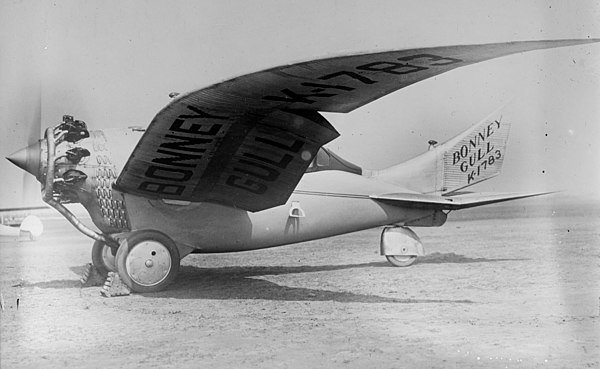-
Posts
1,408 -
Joined
-
Last visited
-
Days Won
12
Content Type
Profiles
Forums
Gallery
Downloads
Blogs
Events
Store
Aircraft
Resources
Tutorials
Articles
Classifieds
Movies
Books
Community Map
Quizzes
Posts posted by Student Pilot
-
-
Using old aircraft with 20,000 hours for aeromedical (Even if it's just supplies) is no longer acceptable. A turbine powered aircraft is way more reliable than two recips that were designed 70 years ago. GA is in such a mess they either have high time old worn out Cessnas/Pipers or million dollar turbines, nothing in between.
-
 2
2
-
 1
1
-
-
Why would you use an ultralight when a drone would be quieter surveillance and have zoom capability?
-
 1
1
-
-
Like any low level operations a reccy before flying low into the block to pick the hazards is SOPs. Can miss them or temporarily forget about them, most line strikes the pilot knew about them. With mustering private ops there never used to be much training, a so called low level check was all that's needed.
-
 1
1
-
-
SWER lines are very hard to see.
-
 3
3
-
-
Always liked that design, with a 503 or 582 it should be a good performer.
-
So sad. Pressing on into bad weather. If you positively have to get there....................drive.
-
 2
2
-
 5
5
-
-
46 minutes ago, kgwilson said:
Charging landing fees on the basis of radio calls is flawed as 1, it encourages pilots not to call and 2, pilots can provide any call sign other than their own. Cameras on the taxiway or runway will get the correct rego. Still not perfect but better.
The answer is no landing fees, the main income is for the parasitic avadata. The income that the councils get after avdata take their percentage (Anybody know what that is?) would be buggar all.
-
 1
1
-
-
Now Nev, you're just trying to provoke 😁
-
 1
1
-
 1
1
-
-
My bad Captain Gazza, If a thread goes any more than 2 pages I loose focus 😆
-
 1
1
-
-
On 18/3/2023 at 1:14 PM, Garfly said:
Yeah, but I gather it was an issue of being on the wrong frequency at the wrong time.
"When I look back on the incident, I wonder what more I could, or should, have done to prevent it from even happening.
Lessons learnt: Perhaps if I had listened out on the Brisbane Centre frequency as well as the Archerfield Tower frequency during our direct track to Park Ridge, we may have been alerted to the presence of the twin.
As it turned out, the only things that saved us from a mid-air collision on that day were pure luck and a sliver of time"
Too many frequencies can distract, you would think there would only be one frequency priority close to the helipad.
-
 1
1
-
-
Like the PG Taylors "Frigate Bird", he is an underrated aviator.
-
 1
1
-
-
12 hours ago, red750 said:
The Bonney Gull was an experimental aircraft that used variable incidence wings with bird-like shapes. Leonard Warden Bonney was an early aviator, who flew with the Wright Exhibition Team as early as 1910. An experienced aviator with service in the First World War, Bonney set out to develop a plane with more efficient wings and controls than contemporary aircraft. Noting the gull's two to one lift to weight ratio, he set about molding gull wings for their shape. Construction took place over the course of five years. The ideas were tested in MIT and the Daniel Guggenheim School of Aeronautics wind tunnels.
Only one built, crashed on its first flight, killing its maker.
It was a graceful design, looks like a control system failure ☹️
-
 1
1
-
-
On 22/6/2010 at 3:47 PM, dazza 38 said:
Mirage to be restored, at Essendon, reportedly to have been bought by a ex- RAAF mirage Pilot. I hope it is true, it would be sensational to see one in australian skies again.Anybody got anymore information?:thumb_up:
A Mirage arrived at Pays restoration a week or so ago
-
 2
2
-
 1
1
-
-
The only one that looks to be struggling is the Javelin, nose up.
-
That's what I was told as a sprog pilot in the olden days Nev 👍
-
 1
1
-
-
Turbo, do you (or any of your family) now work or have you ever worked for CASA?
-
 1
1
-
-
On 20/08/2019 at 12:06 PM, Garfly said:
I still find ole mates videos hard to watch, my limited intelligence, bad comprehension short attention span got a bit to do with.
-
8 hours ago, turboplanner said:
If you look at any business from your own little dunghill, it will always appear that you are losing the good talent you've mixed with for decades and the industry is becoming less understandable, going to the dogs, not like it used to be, will extinct etc.
People comment about their own local area, which may well be going bad, but they don't live in or visit other States and districts which are booming.
Yes there are exceptions that are going ahead. I have traveled a bit and Mostly I see places shut down or shutting down. GA is in a steep decline and has been for the last 25 years or so. I have friends in a few different areas/states that also say that.
RAA seems to be clinging on still, nowhere near the interest or aircraft there was 25 years ago. I suppose the real decline in wages and income (Compared to inflation) over that time has a big part in it. Also the changing of the want/dynamic of RAA is compounding the decline. Now an RAA aircraft cost about the same as a 182 did 25 years ago. A Rotax 912 now cost what an 0-520 used cost to overhaul 25 years ago. There are still basic cheap flying machines but seems the average price of any new machines be it composite or metal is way over $100,000. No way an average man on wages can afford to learn to fly let alone own an aircraft.
-
 4
4
-
-
On 13/03/2023 at 12:21 AM, red750 said:
The Seversky SEV-3 was an all-metal cantilever low-wing monoplane powered by a nose-mounted 420 hp (313 kW) Wright J-6 Whirlwind radial engine. It had two cockpits in tandem, a forward cockpit for the pilot and a rear cockpit for two passengers, both with sliding canopies. It could either be fitted with twin amphibious floats which had main wheels fitted in the floats to allow it to operate from land, or with a fixed tailwheel undercarriage with the mainwheels enclosed in large fairings.
The SEV-3 first flew as a floatplane in June 1933, demonstrating excellent performance as both an amphibian and a landplane. It was built in small numbers mainly for export.A bit like the machine Will Rodgers and Wiley Post were killed in.
-
-
Anybody familiar with Bob Lazar's drawings on flying machine design? Do a bit of reading on the subject, it is interesting.
-
 1
1
-
-
The price I quoted was just for the instructor, aircraft on top of that.
-
 1
1
-
-
Seems people are getting more gullible, like the rest of the conspiracy theories.
-
 1
1
-
-
Last time I saw an RAA instructor he was charging $150 an hour, I think he should have used a mask when instructing like a burglar.
-
 1
1
-





The Latest Outstanding Communication from RA-Aus
in Student Pilot & Further Learning
Posted
So you blame RAA and not CASA?